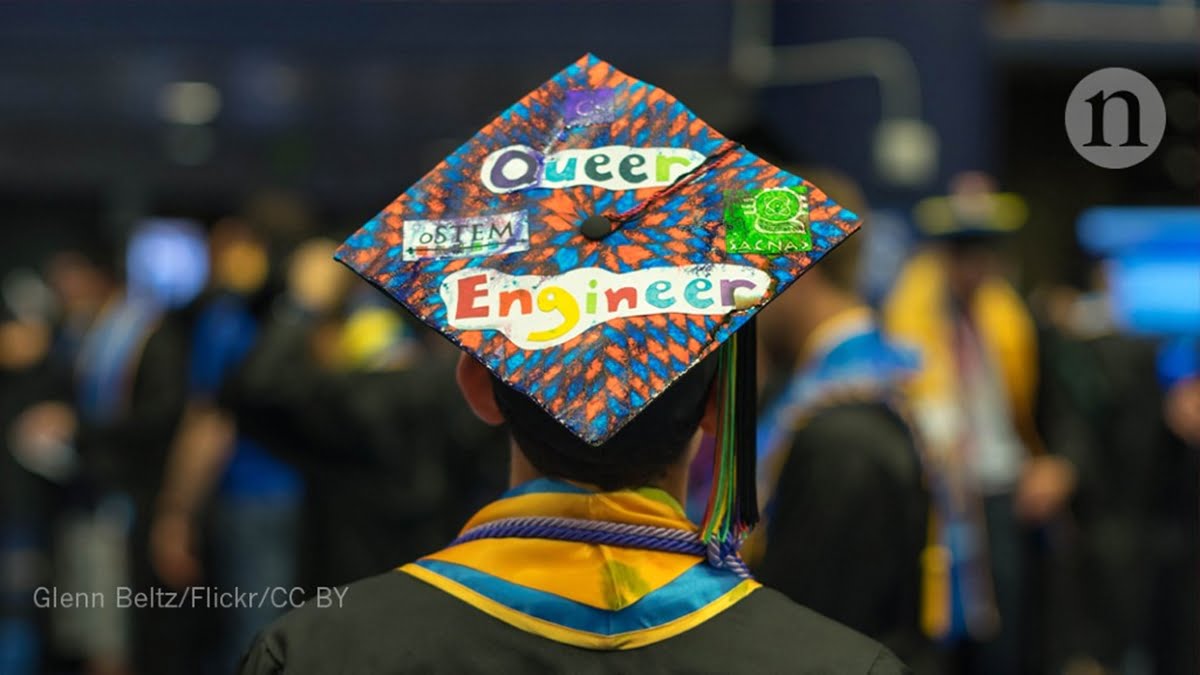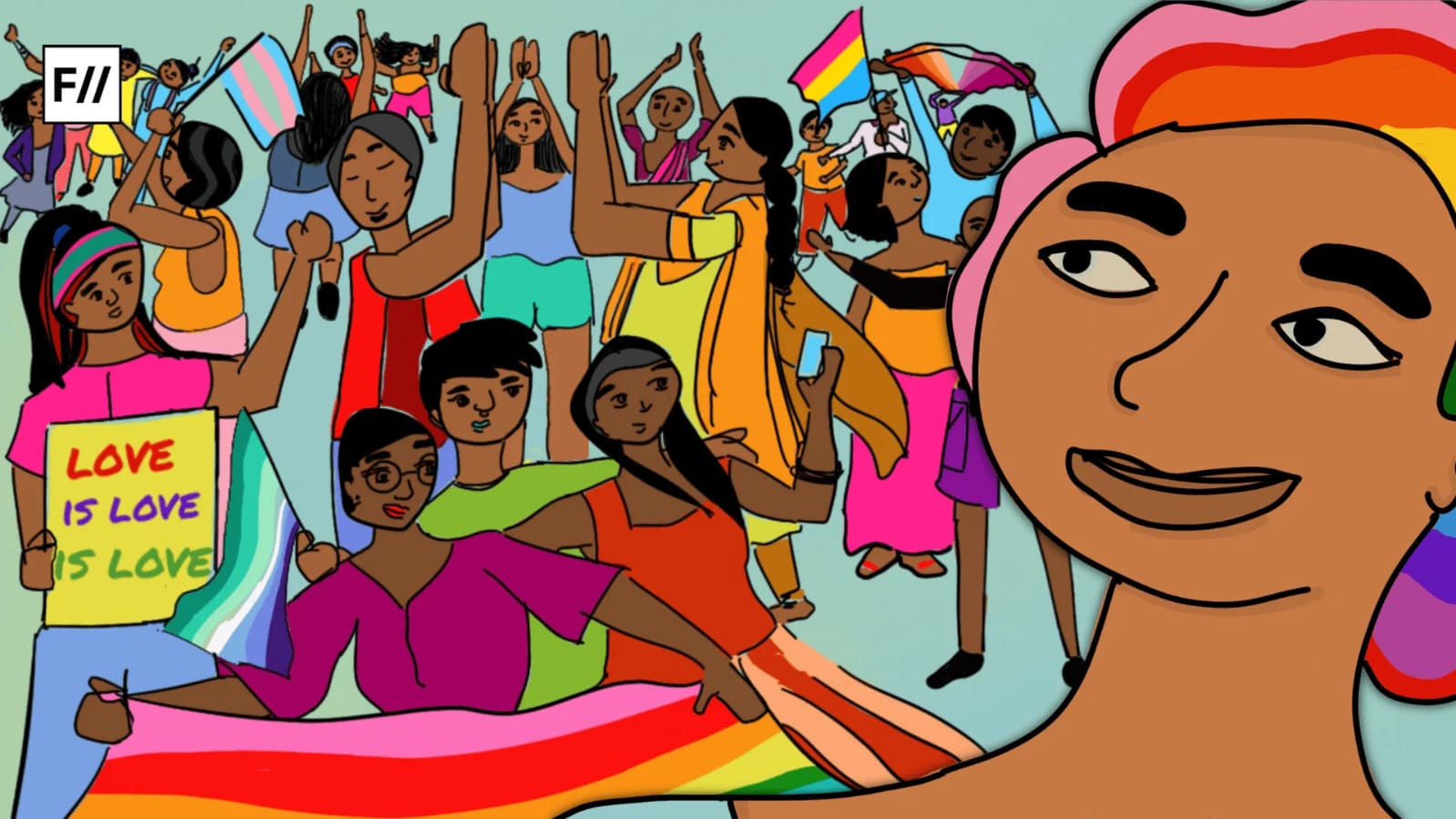If someone asks me to name a few openly queer scientists and engineers in India, I can hardly think of any. While pursuing my Bachelor’s degree in chemical engineering in Mumbai, I did not know a single other LGBTQ+ student in my college, let alone any professor. I was closeted myself. Role models are so important in any person’s life. The lack of queer visibility in STEM makes it harder for queer youth to opt for STEM disciplines, and they are instead gravitated towards arts and humanities, where they feel more included. Moreover, the culture in engineering upholds masculinity just like the rigid structures of what conventionally forms rationality and expects men to be macho. I grew up being bullied in my high school for being effeminate. Being someone who likes art, reading and cooking and doesn’t take interest in sports, many times I felt like an outsider amongst my engineering peers, many of whom would instead watch and play sports and video games.
While pursuing my Bachelor’s degree in chemical engineering in Mumbai, I did not know a single other LGBTQ+ student in my college, let alone any professor. I was closeted myself. Role models are so important in any person’s life. The lack of queer visibility in STEM makes it harder for queer youth to opt for STEM disciplines, and they are instead gravitated towards arts and humanities, where they feel more included.
While doing my PhD in the United States, the university campus had a LGBTQ+ resource centre, which organised a number of social and wellbeing events. Things got better for me, when I started to make efforts to find my own community. That is when I found the courage to come out of the closet. I also got actively involved in oSTEM, an organisation specifically for LGBTQ students and faculty in STEM, which provided me with a supportive community. Although I felt included in this community, it consisted majorly of white students and faculty, a few Black and Latino students, but rarely anybody from South Asia. Many aspects of the South Asian culture are different from the American culture, and so my friends found my experiences difficult to relate to. In a particular semester, when my mental health was in a poor state, I approached a therapist from the campus counselling centre. My therapist, a white, non-binary person, provided me with plenty of useful resources, but also admitted that they couldn’t relate to several of my experiences that were unique to the South Asian culture.
Most of the international students (coming to the US from other countries) tend to find a community amongst other students from their own country. Such a community makes them feel at home in a foreign land. However, communities from conservative cultures are generally heteronormative and queer international students can feel excluded from them. Alternative communities might be difficult to find and can lead to a lack of supportive atmosphere for these students. This was particularly true in my case. The Indian student community in my department majorly consisted of cisgender heterosexual men. I felt hostile in this community and sometimes heard homophobic jokes. I was often gaslighted when I called people out for saying insensitive things.
Microaggressions in professional settings weren’t uncommon. At a dinner with my research collaborators, a visiting professor from Saudi Arabia asked me, “Do you have a wife?”; which is a classic example of heteronormativity. Thoughts rushed in my mind—should I come out to him? Could he be homophobic? Would coming out to him affect my collaboration with him? And so on. Hiding one’s identity is exhausting. On another instance, I was having a casual conversation with a professor on my campus. I had just returned from a trip to India. He asked me, “How was your trip back home? Did your mom find you a girl and get you married?” Questions of these kind highlight stereotypes about an ‘Indian man’.

A prevalent attitude amongst individuals in STEM is to focus on one’s science and not bother about anything else. The curriculum in many engineering colleges in India does not include courses on gender and sexuality, casteism, and social justice issues. Conversations about empathy and mental health are also uncommon.
A prevalent attitude amongst individuals in STEM is to focus on one’s science and not bother about anything else. The curriculum in many engineering colleges in India does not include courses on gender and sexuality, casteism, and social justice issues. Conversations about empathy and mental health are also uncommon. Facilitating such conversations on a regular basis and training both students and faculty about how they can be good allies, can gradually improve the atmosphere at all levels. Success and retention of queer students is strongly dependent on whether they feel included and accepted by their peers, whether they can be ‘out’ in the classroom and on campus without having to face any discrimination or bullying. It is encouraging to see that many colleges like the IITs have established LGBTQ+ support groups on campus over the past decade, however, a majority of colleges with STEM disciplines still lack such resources. Such on-campus groups should make additional efforts to provide support to queer students with intersectional marginalised identities (women, transgender and non-binary, Dalit, Muslim, etc).
Quoting Audre Lorde, ‘revolution is not a one-time event’; a lot of work still needs to be done. But I feel immensely hopeful that one day, with increasing visibility of queer individuals in STEM, and more and more people stepping up as allies, queer youth will feel motivated to take up STEM, feel included and succeed.
Sanket Sabnis lives in Mumbai. He holds a PhD in chemical engineering from UMass Amherst. He won the 2020 Diversity, Equity and Inclusion Award from the college of engineering at UMass Amherst.
Featured image source: Nature.com




